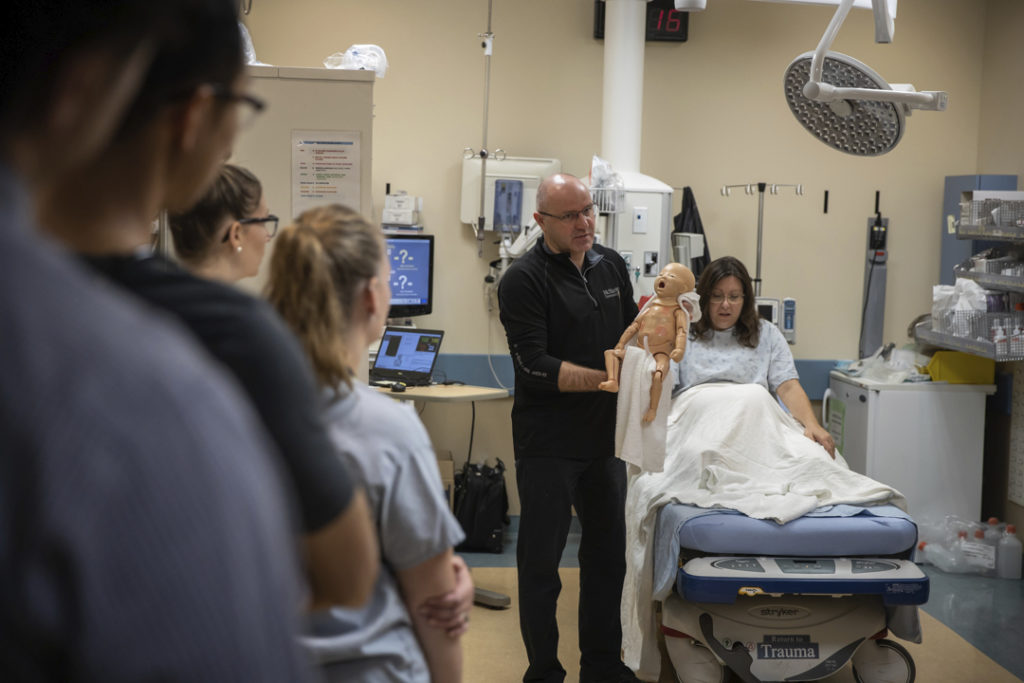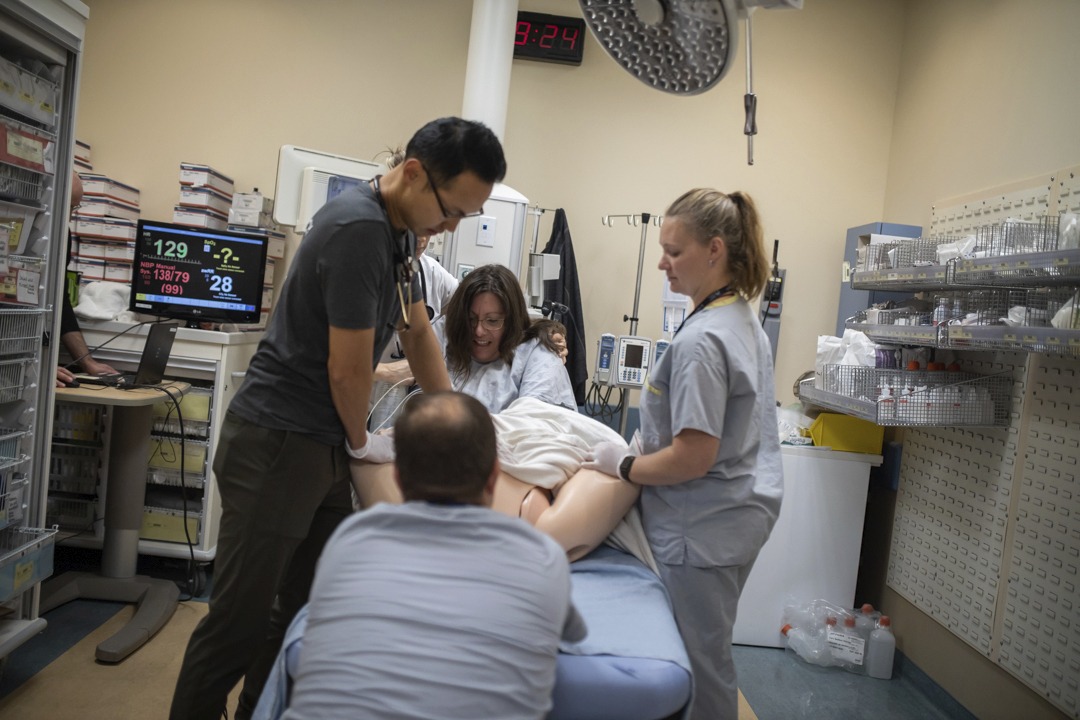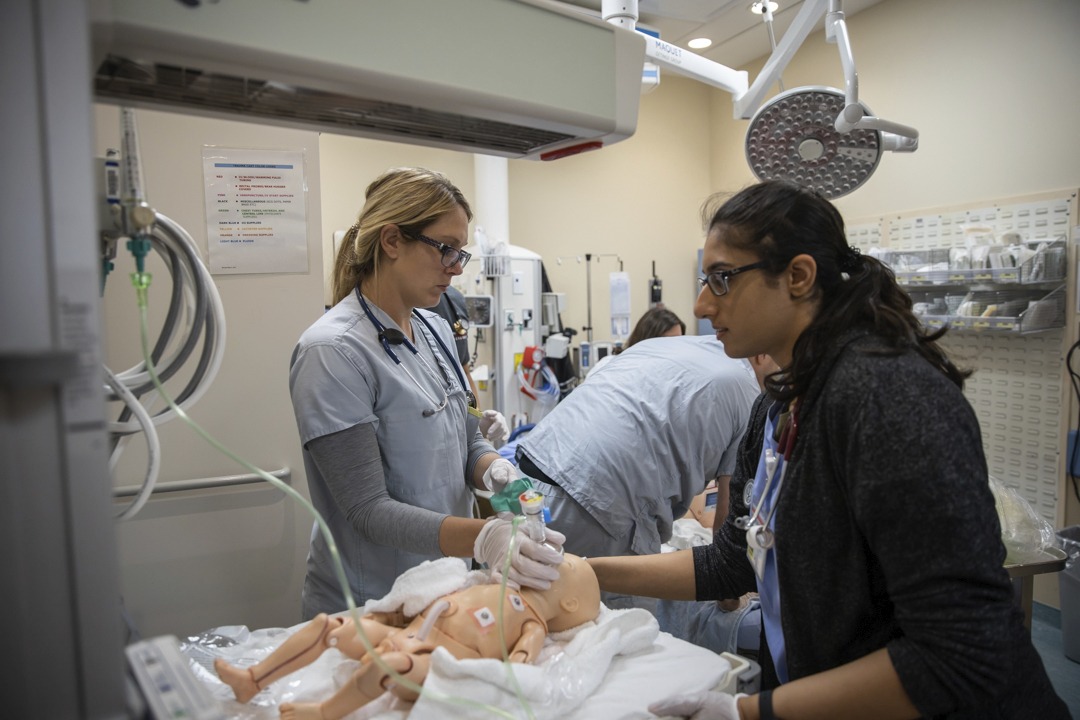
ED team prepares for emergency birth with simulation
The emergency department at Hamilton General Hospital (HGH) doesn’t deliver babies very often, and they have no obstetricians or pediatricians onsite. But that doesn’t mean HGH isn’t prepared in case of an emergency.
Hamilton General Hospital’s emergency department (ED), in partnership with McMaster University Medical Centre’s obstetrics department and McMaster’s Centre for Simulation Based Learning (CSBL), hosted a simulation exercise to prepare for the possibility of a mother visiting HGH in labour.
The simulation
The mock scenario involved a patient in premature labour who was experiencing a rapid labour and delivery process. The care team practiced delivering the baby, resuscitating (reviving) the infant, and managing the mother’s health after the birth.
“We used practice patients to test our processes for something that happens rarely at the Hamilton General Hospital ED. We were looking at how we can be best prepared for when a person arrives in active labour,” says emergency physician Kyla Caners, who led the simulation.
“What’s really incredible is that we also practiced the process of how help is sent from our obstetrics team at our McMaster site and then we all sat down together and talked about the most efficient and effective way to do this for future, real cases. Talk about a powerful experience!
Examining patient safety
By testing their systems, the emergency team at HGH was able to find potential threats to patient safety and correct them, before bad outcomes could happen.
Findings from the debrief are incorporated into emergency department team meetings to ensure the team is continually improving the quality of care offered in the emergency department.
“This exercise is about the importance of collaboration across Hamilton Health Sciences sites,” says Dr. Caners. “By bringing people together, we can share knowledge and continually innovate to ensure our processes and environment are set-up to provide the highest quality patient care.”
These simulations are part of a training series to identify opportunities for improvement as part of Hamilton Health Sciences’ Continuous Quality Improvement (CQI) system.


